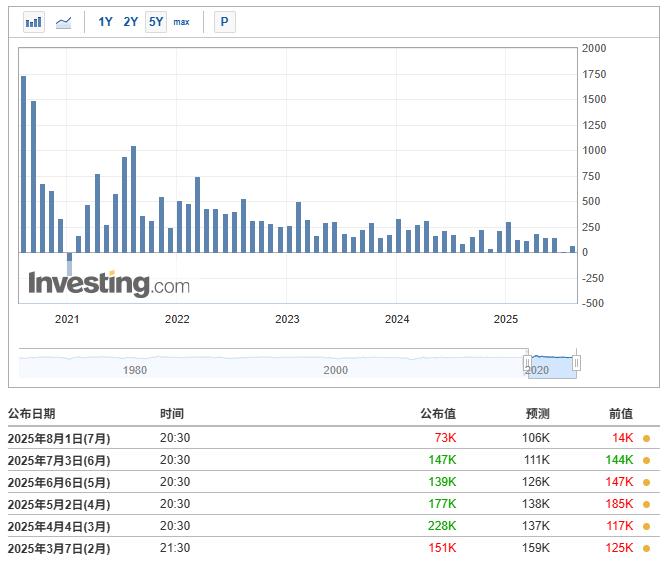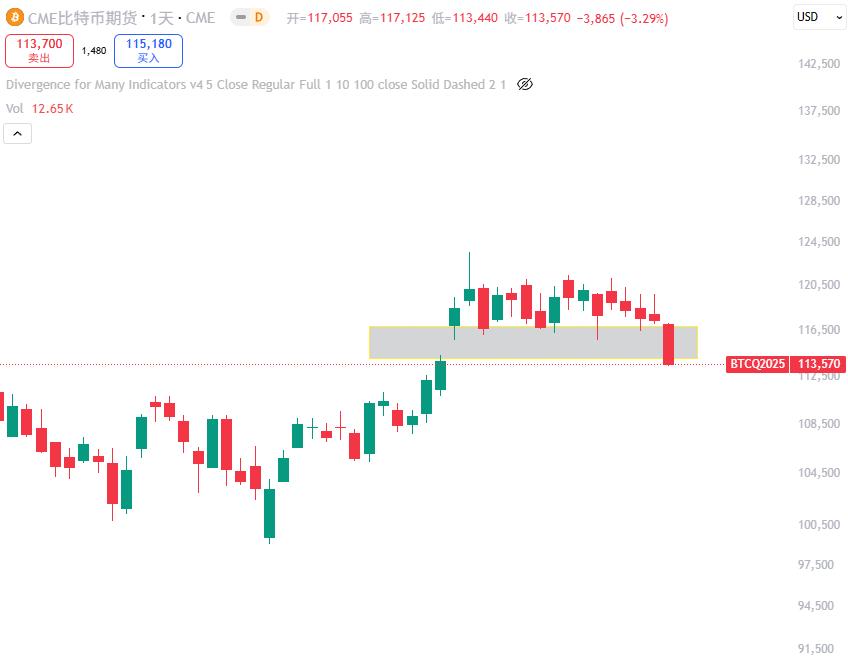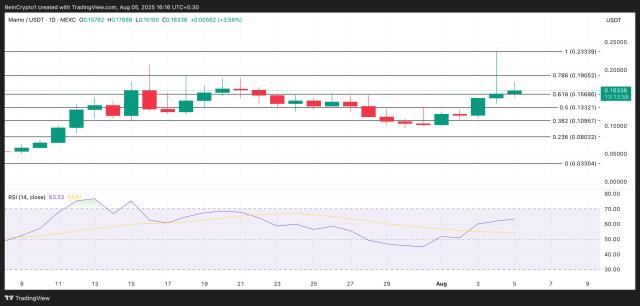Written by: Luke, Mars Finance
During the weekend of early August, the crypto world suddenly felt a chill. Within just 24 hours, over $600 million in long positions were completely wiped out in a chain of liquidations. Market panic spread like wildfire. Bit's price dropped from near 119,000 to below 114,000. Social media was filled with moans, confusion, and accusations. People urgently wanted to know where this sudden storm came from.
This was not an isolated "crypto-native" event, but a chain reaction triggered by external macroeconomic impacts on a structurally fragile market. Geopolitical sparks and economic data paradoxes ignited a fuse, exploding a market already saturated with dangerous leverage. The entire liquidation cascade seemed precisely guided by the gravity of an existing CME futures gap. This was a "perfect storm" of macro, micro, and technical factors perfectly resonating.
External Impact: Global Risk Aversion Trigger
The root of this crash was deeply planted in the soil of traditional finance. Two almost simultaneous macro events formed the catalyst for a comprehensive market sell-off, clearly demonstrating the increasingly tight connection between crypto assets and the global economic pulse.
First, the geopolitical shadow. On August 1st, the Trump administration suddenly announced broad new tariffs on imported goods from 92 countries and regions, ranging from 10% to over 40%. This immediately triggered a classic "Risk-Off" mode globally. Capital fled risk assets and rushed into gold, pushing gold prices to surge above $3,350 per ounce. The Chicago Options Exchange Volatility Index (VIX), Wall Street's "fear index", also dramatically rose. In this environment, institutional capital did not view Bit as "digital gold", but classified it as a high-beta risk asset similar to tech stocks. Therefore, the tariff news directly pressured crypto prices, becoming a key external factor in Bit dropping below $115,200.
Adding insult to injury, the US Labor Statistics Bureau's July Non-Farm Payrolls (NFP) report on August 2nd showed only 73,000 new jobs that month, far below the market's expected 106,000. More impactfully, as New York Fed President John Williams noted, the "real news" was the "exceptionally large" downward revision of May and June data, indicating the US labor market was much weaker than previously imagined.

This weak report triggered a contradictory market response. On one hand, it intensified recession fears, directly fueling sell-offs under risk aversion. On the other hand, it dramatically changed market expectations of Fed monetary policy. According to CME's FedWatch Tool, the probability of a 25 basis point Fed rate cut in September surged from less than 40% to 89.8%.
This formed the most subtle core motivational mechanism in this event: the market was forced to price between two completely opposite narratives. The first was the "fear narrative": tariffs and weak employment data both pointed to economic recession risks, and fund managers' instinctive reaction was to reduce risk exposure and sell volatile assets like Bit. The second was the "hope narrative": the same weak data was interpreted by another group of algorithms and analysts as forcing the Fed to act by cutting rates to stimulate the economy. Historically, increased liquidity from rate cuts has been "rocket fuel" for risk assets. The market thus fell into a dilemma, and this profound uncertainty generated extreme volatility, laying the groundwork for massive liquidations.
Internal Detonation: A Market Prepared for Collapse
If macro impacts were the lit match, the internal structure of the crypto market was a barrel filled with gunpowder. On the eve of the crash, extreme optimism and rampant leverage had created perfect conditions for a catastrophic implosion.
In the days before the crash, derivatives markets had already sent clear red alerts. Bit futures' open interest (OI) had surged to its highest level since late 2024, exceeding 300,000 Bit with a nominal value of $42 billion. This indicated massive capital was locked in futures contracts, with extremely high market leverage. More critically, mainstream exchanges' funding rates remained consistently positive, an unmistakable signal that the market was dominated by leveraged long positions. Bullish traders were so confident they were willing to continuously pay fees to shorts to maintain their long positions.

When macro-driven selling began, it triggered a domino effect. Coinglass data showed a total of $396 million in leveraged positions were liquidated, with $338 million (85%) being long positions. Other sources indicated total liquidations between $635-726 million, with longs comprising nearly 90%. This liquidation cascade was not accidental but a brutal yet necessary market self-correction mechanism.
Technical Destination: CME Gap's Gravity
Users' initial judgment—that the market dropped to "fill the gap"—touched on a key technical layer of this event. The CME futures gap played a black hole-like role in this chaotic market, providing a clear destination for price free fall.

As a regulated traditional financial exchange, CME's Bit futures products close on weekends. However, crypto spot markets trade 24/7. This leads to "gaps" on CME charts between Friday's closing and Monday's opening prices. A widely known theory among traders suggests markets tend to "fill" these gaps.
In the chaotic market, the CME gap served as a "Schelling Point" - a natural focal point that can be found by mutual understanding without communication. For sellers and liquidity hunting algorithms, it is a predictable and perfect attack target. When macro news provides a catalyst for selling, these algorithms' selling behavior is not random. They apply pressure along the path of least resistance and maximum impact. Targeting a known gap ensures they can precisely trigger stop-loss and liquidation orders clustered around that level. As prices are pushed toward the gap by algorithms, human traders who also focus on the gap join the selling due to fear of the gap being completely filled, further enhancing downward momentum. Therefore, the gap is not the cause of the crash, but it becomes the destination of the crash.
Capital Game: Whale Selling and ETF Accumulation
Beneath the surface of market price plunge, a silent war about capital flow is unfolding. On-chain data forensics reveal completely different behavioral patterns among market participants.
Data from on-chain analysis platforms like CryptoQuant and Lookonchain shows that in the hours or even days before the crash, "whales" holding large amounts of Bitcoin were actively transferring tokens to exchanges. A notable example is that the well-known trading company Galaxy Digital deposited over 10,000 Bitcoins (worth approximately $1.18 billion at the time) into exchanges like Binance, Bybit, and OKX in less than 8 hours. This behavior is a typical "Smart Money" distribution signal.

In stark contrast to the whales' distribution behavior, the recently established spot Bitcoin ETFs continued their systematic buying pace. Analysts point out that "institutional demand continues to absorb supply", and these ETFs played a crucial role in supporting the market during the downturn, preventing further price collapse. This represents a powerful, non-discretionary buying force in the market. Unlike whales trading based on tactical needs, ETF purchases depend on customer capital inflows, creating a stable, continuous demand stream that provides a solid price bottom. The short-term tactical sellers (whales) versus long-term systematic buyers (ETFs) game clearly reveals the market's inherent resilience and answers a key question: "Why didn't the price drop lower?"
Long Road Ahead: Navigating the Crossroads
After this storm, the market did not find calm but entered a crossroads filled with confusion and divergence. Analysts' comments also showed significant disagreement. Some, like Nathan Peterson from Charles Schwab, suggest investors "sell on rallies". Others believe the market is in a "healthy buy-the-dip zone". Crypto Banter's founder Ran Neuner even predicts Bitcoin could reach $250,000 by the end of the year, while MicroStrategy's founder Michael Saylor called this dip "God's gift".
Currently, the market is weighing short-term fears of economic recession against medium to long-term bullish expectations of Fed rate cuts and a new round of liquidity injection. This crash fundamentally reset market dynamics, forcing every participant to re-examine their investment logic. The future direction will depend on which capital group can exert more influence - short-term traders scared off by macro fears or institutional investors persisting in long-term accumulation. The massive liquidation event has washed away the most reckless leverage in the market, making the market structure more "clean" but also more cautious. This post-crash era is a high-risk test of the crypto market's maturity and institutionalization.
Conclusion: Lessons in the Storm
The "August Storm" of 2025 was a multi-act play. It began with a macro-political impact, was infinitely amplified by a fragile and over-leveraged derivatives market, and ultimately found its technical destination at a CME gap. This event provides profound lessons about the modern crypto market, revealing its inherent duality. On one hand, its increasingly tight integration with the global financial system provides long-term growth momentum and a potential price floor. On the other hand, the same integration makes it highly susceptible to traditional market shocks and geopolitical events. The "August Storm" is the ultimate embodiment of this tension - a head-on collision between old world macro fears and new world digital asset accumulation. The future of cryptocurrency will be defined by how it navigates between these two powerful and often opposing forces.





